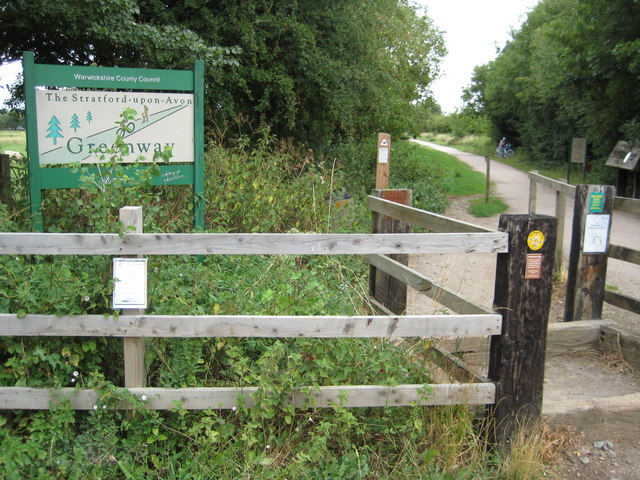As the birthplace of Shakespeare, Stratford-upon-Avon has been written about for centuries, ‘done’ by coachloads of ocean-hopping sightseers on wearying whistle-stop tours of Britain, and is arguably more famous than capital cities ten times its size. And yet, despite it being so celebrated, few visitors are aware of just how much Stratford has to offer.
Whether you want to explore the remnants of the Bard’s legacy or simply indulge in a peaceful afternoon in one of Britain’s prettiest towns, a weekend in Stratford-upon-Avon promises culture, history and relaxation in bounds.
What to see and do in Stratford-upon-Avon
Catch a play at one of the town’s three theatres
If the reason you’re going to Stratford is for its connection to Shakespeare then its array of theatres are a must-visit. Home to the Royal Shakespeare Company (RSC), the town’s three public performance spaces are the best place to connect with the man and his work; they are where his efforts live on for all time. While the Royal Shakespeare Theatre (RST) remains the most popular option, don’t miss the smaller but equally beautiful Swan Theatre and The Other Place. Their intimacy and warm brick and timber structures are worthy of a visit regardless of whether you choose to watch a production there.
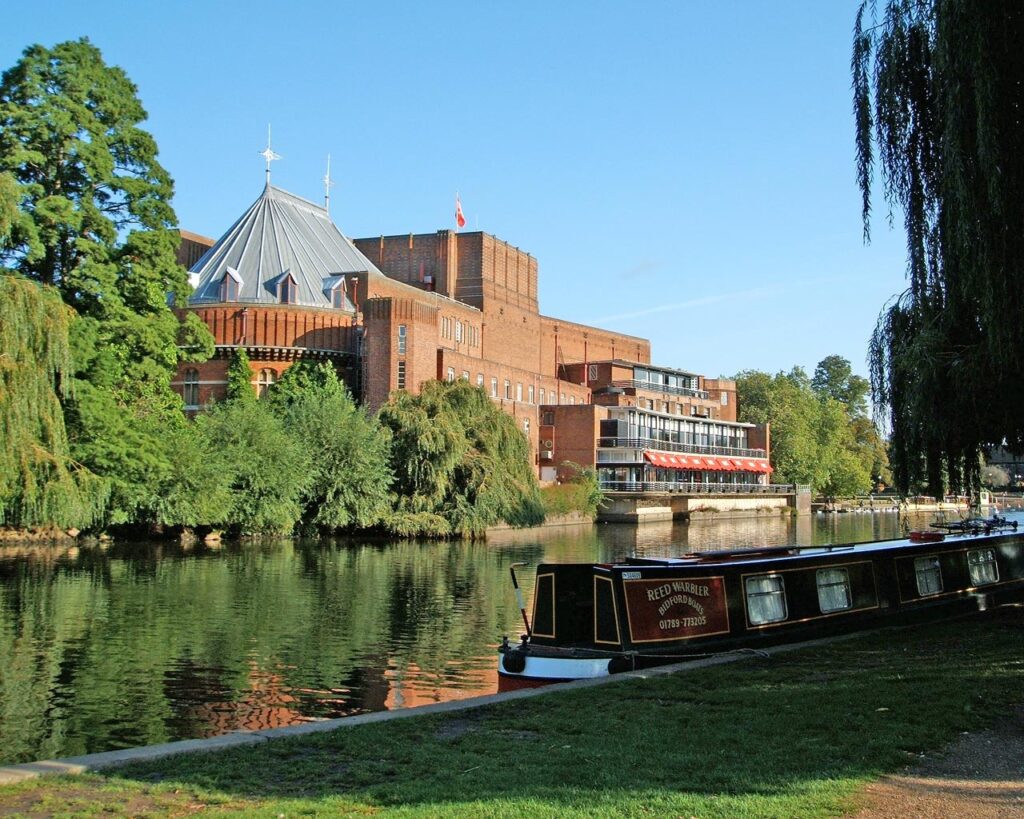
You don’t have to watch a play just because it’s the thing to do in Stratford, though the more you explore the theatres themselves the more appealing it becomes. Climb the RSC Tower connected to the RST for views over the town or take a backstage tour and feel the energy and excitement that the buildings create.
Follow in the footsteps of the Bard
So many places in Stratford enjoy celebrating a Shakespeare connection that you half expect a plaque on the wall of a building exclaiming excitedly that the great man ‘may’ have been troubled by flatulence there. Every Tudor building in the town has the possibility of some sideways association but a few demand a place on your itinerary above others. Shakespeare’s Birthplace is noticeably out of keeping with the remainder of the properties on Henley Street. Its long road frontage woos many a foreign visitor for whom this moment might be the first time they have ever seen such a quaint-looking house. Don’t miss the exhibition on the Bard’s life located in the adjacent Shakespeare Centre.
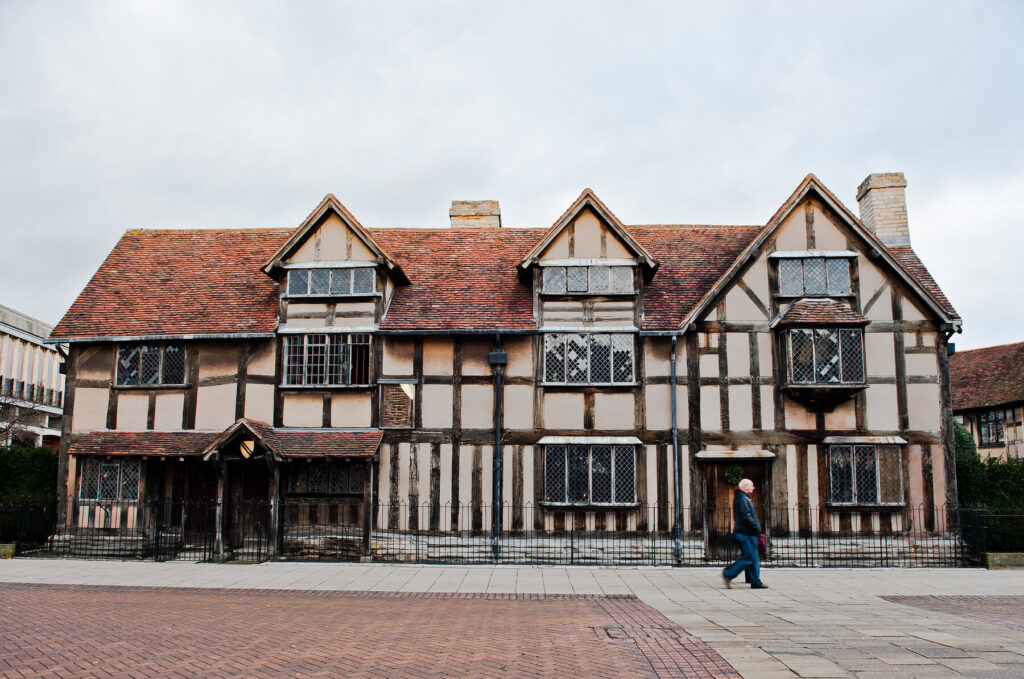
Tucked into a quiet lane in a little offshoot village of Stratford known as Shottery is Anne Hathaway’s Cottage, the childhood home of Shakespeare’s wife. Considered one of the most romantic of the Shakespeare houses, this is of course noted for being the place where the young and virile William wooed his future wife. Perhaps of all the Shakespeare houses, Hall’s Croft in Old Town has the least contiguous connection to William. William’s daughter Susanna and her husband Dr John Hall, owned the property, having had it built for them in 1613. Forget patient confidentiality, you’ll find the doctor’s notes, his diagnoses and prescriptions along with the most nerve-wracking of medical implements.
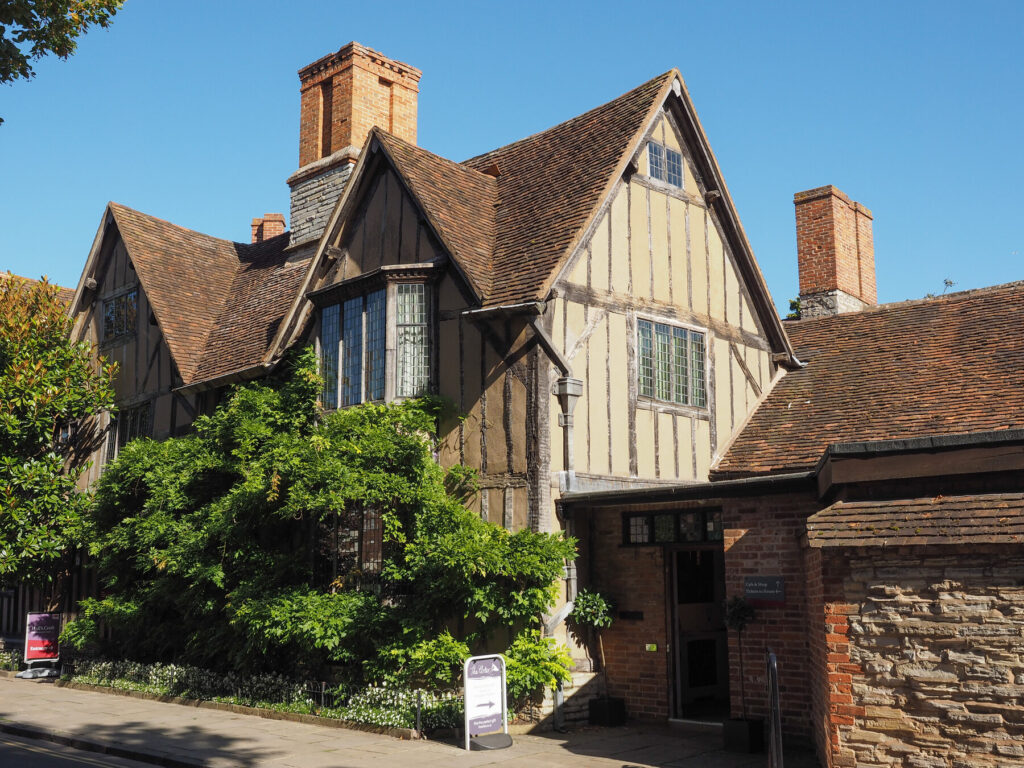
For more information on these houses and which ones are worth a visit, head to the Shakespeare Birthplace website. Note, however, that a ticket for all five properties represents excellent value for money.
Take a moment to reflect at the Holy Trinity Church
The spindly spire of what is known as ‘Shakespeare’s Church’ dominates the skyline of the southwest side of Stratford. This is where William Shakespeare was baptised in 1564 and where he is buried, though you’ll find a hunt around the grounds for his gravestone fruitless. His final resting place is inside the church and you have to pay a small fee to view it and the memorial bust that sits above (although entrance to the church is free).
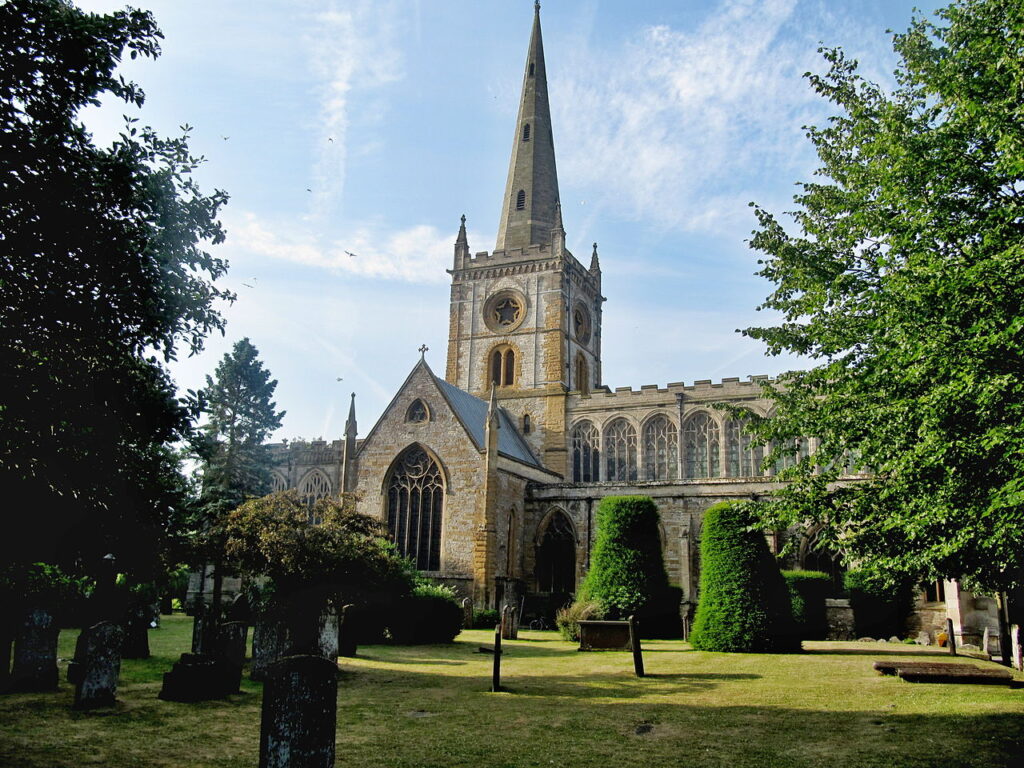
That William is granted a grave free from the ravages of weather is not owing to his status as the greatest playwright that ever lived. He paid for the privilege! Keen not to have his bones dug up and placed in a charnel house to make way for other incumbents, he placed a curse upon his grave to ensure he could lay there in peace for eternity. To date no-one has dared to test this curse.
Hire a boat along the River Avon
After the Bard, it is the River Avon that is the biggest draw, for some the fun being to watch inexperienced rowers steer their hire boat – and its passengers – into the overhanging trees before fighting with an uncooperative oar to get them out of strife.
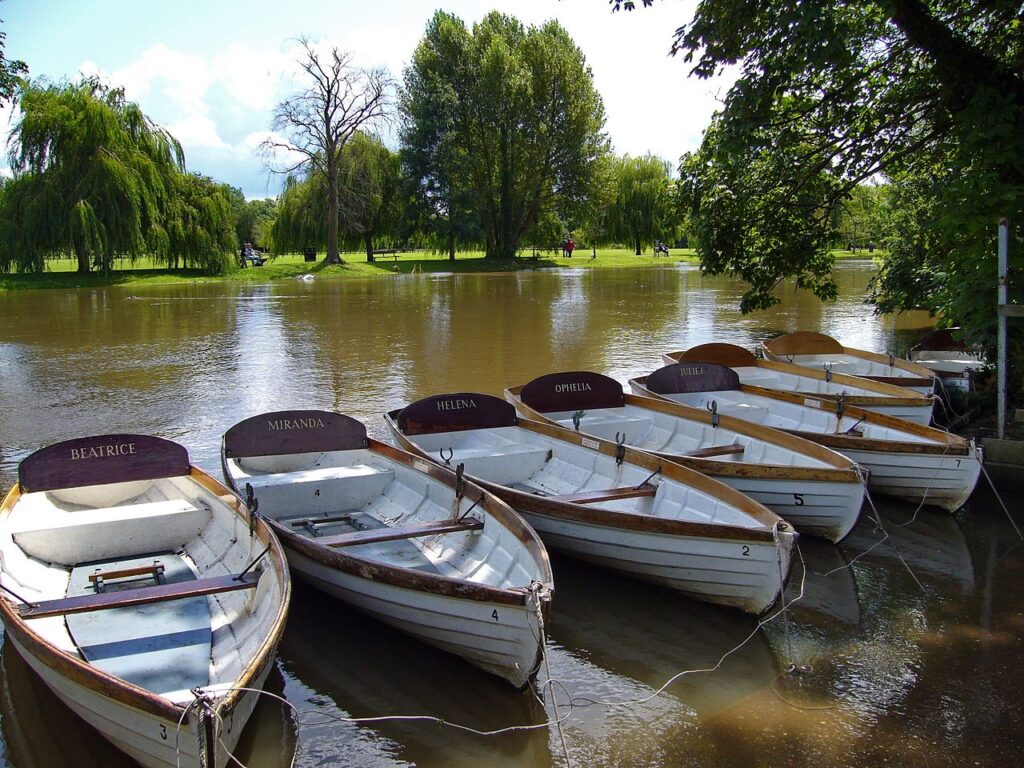
You can hire either traditional wooden rowing boats or engine-propelled craft – all named after a Shakespeare character of course – from the boathouse by Clopton Bridge and next to the chain ferry southwest of the theatres. With only a small stretch of waterway available to rowing boats southwest of the bridge, which is also used by narrowboats and guided tours, the nicest option for rowing is to travel upstream underneath Clopton Bridge. You’ll pass private gardens on one side of the river and open space on the other bank. Half a mile upstream is a picnic area where you can moor up and stretch your legs. The alternative to your own muscle power is to take a sightseeing cruise.
While away an afternoon in one of the town’s picturesque green spaces
Stratford’s abundance of green spaces is certainly one of the town’s special points. The gardens around the Shakespeare properties are, surprisingly, some of the most peaceful, and colourful. They’re not so much for sunbathing but they do provide a pleasant place to sit and read a book and enjoy the riot of colour from the flower borders.
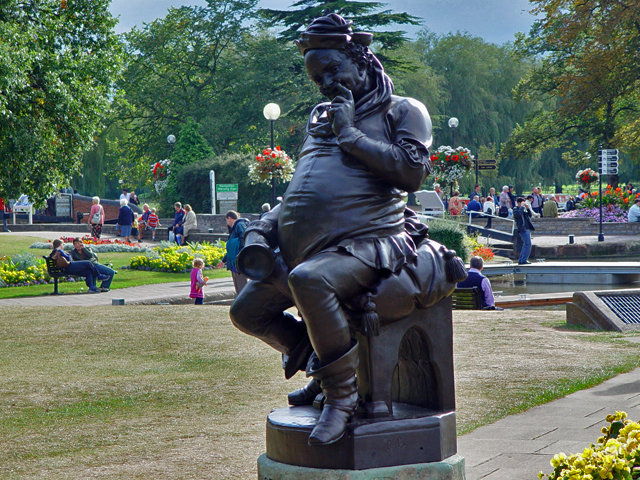
Of the public parks, the Bancroft Gardens are the best known and most used owing to their location next to the River Avon and between the Royal Shakespeare Theatre and marina. There’s usually a street artist performing – some more skilled than others – and boats in the marina serving ice cream and snacks.
On the Bridgefoot side of the marina, around the Gower Memorial – the most significant of many memorials to Shakespeare in the town – the gardens have been attractively redesigned to incorporate floral displays and a rose garden. The Bancroft Gardens are the place to watch the world go by – and often the entire world does indeed seem to be there; don’t expect solitude.
Stretch your legs along the Greenway
A railway until 1976, the Greenway now forms a traffic-free route for walkers, cyclists and horseriders. The route begins from a car park and picnic area off Seven Meadows Road on the southwest outskirts of the town and continues for five miles to the village of Long Marston, where there is parking for horseboxes to allow riders to use the recreational route. Along the way are further picnic stops, one by Stannels Bridge along the banks of the Avon three-quarters of a mile from the start, the other at Milcote tucked away in a garden on the site of an old railway station.
You can take a 3½-mile circular walk starting at either the Seven Meadows Road or the Milcote picnic area entrances and using the Greenway together with the Avon Valley Footpath on the banks of the Avon. It’s a pleasant out-of-town stroll that can be accessed from the centre of town when the crowds become too much and, being totally flat, is easy for young children.
Where to eat and drink in Stratford-upon-Avon
Stratford has a wealth of dining experiences (Sheep Street is the best for independent eateries) and because of the theatres you’ll get food well into the evening. Pre-theatre menus usually begin around 17.00, there’s then a second sitting for those not going to the theatre followed by post-show dinners.
The Opposition
A Stratford institution – known as ‘The Oppo’ to locals – that has been serving up really tasty food for over 30 years. Great snug ambience (think comfy window seats, cosy fireplaces, exposed brickwork, timber-panelled walls), superb classic bistro dishes (meatballs, lamb shanks) and, owing to its proximity to the theatre – a 2-minute walk – it’s a popular haunt for pre- and post-theatre dinners.
The Dirty Duck
Also, but rarely, known as the Black Swan – look at the pub sign hanging over the door – The Dirty Duck is another Stratford institution for being the place where actors from the RSC hang out after a show, it being 2 minutes’ walk from the theatre.
There are better places to eat in town but come here to drink in the Actors’ Bar, which is covered with signed photos of past thespian customers, or sit outside on the terrace overlooking the river and the theatres.
The Four Teas
All the fun of the Forties without the rationing; even the windows are ‘wartime prepared’. Vintage furniture and crockery, posters inviting you to join the Land Army, Union Jack bunting, Vera Lynn and Glenn Miller over the ‘wireless’ and waitresses dressed from the ‘40s.
Opt for an Ivor Novello Afternoon Tea or sample one of 18 types of tea plus coffees, hot chocolate and light bites from breakfast, lunch and tea menus. Step out into the back garden to see original Anderson Shelter.
More information
For more information on Stratford-upon-Avon, check Caroline Mills’s guide to the Cotswolds:
